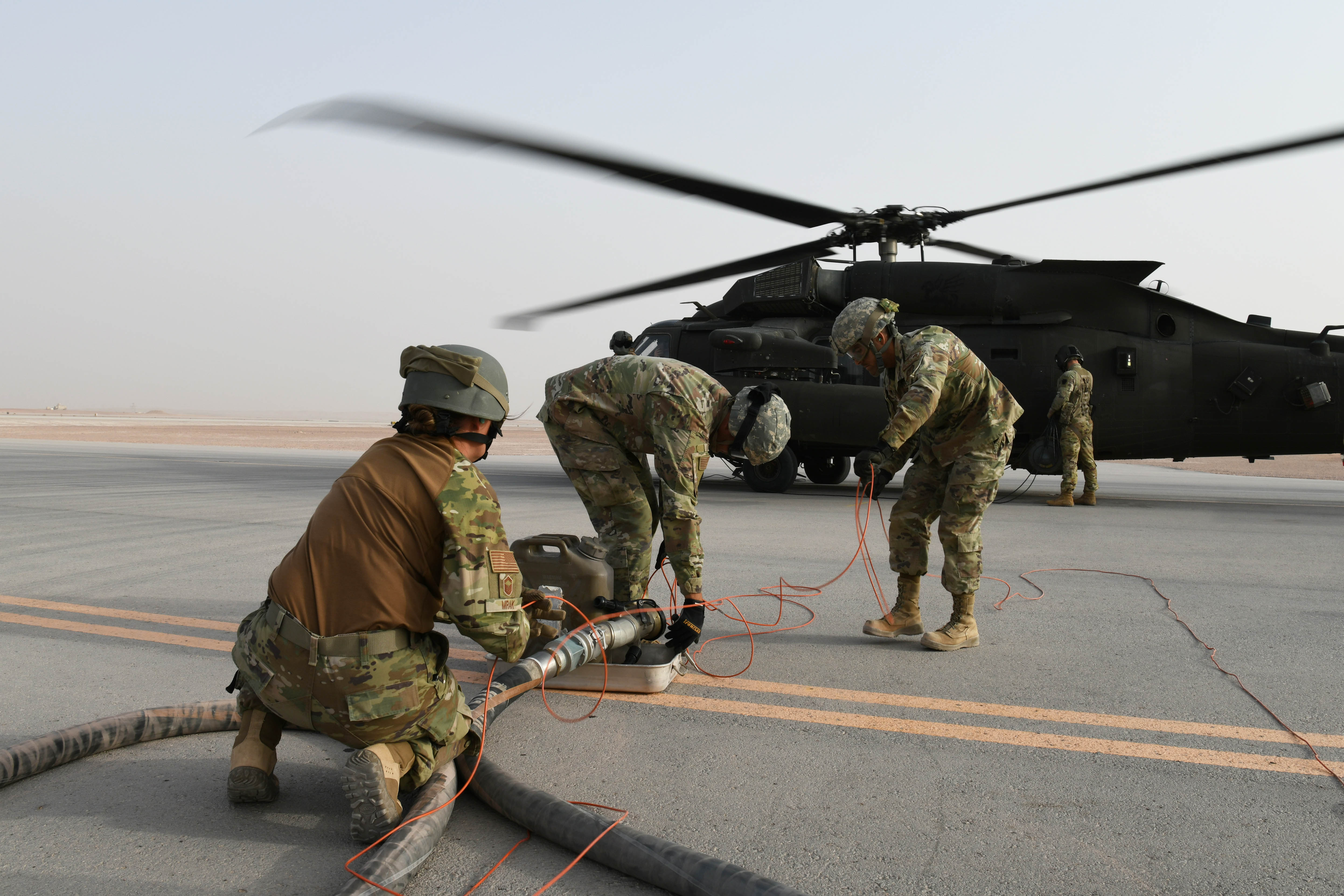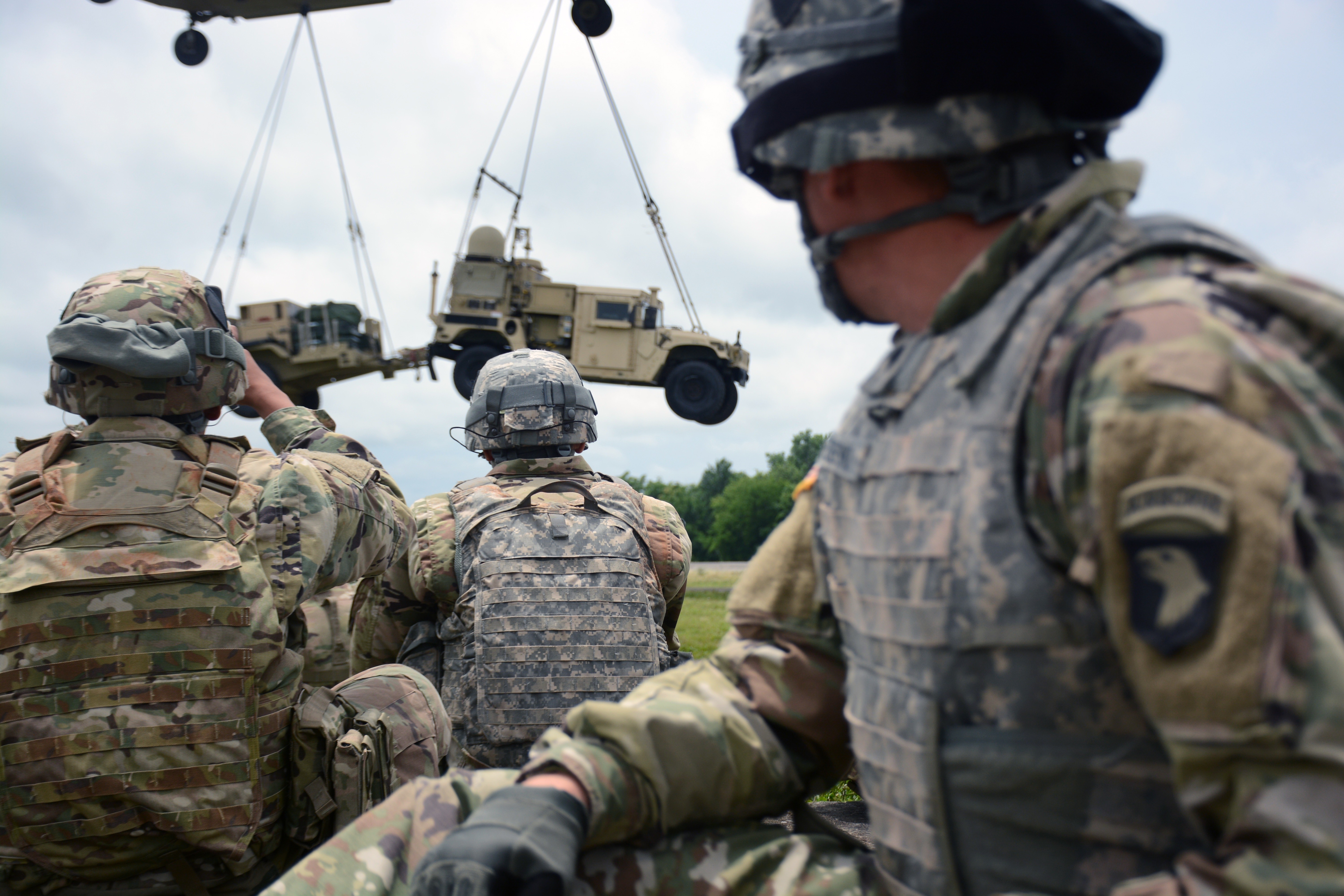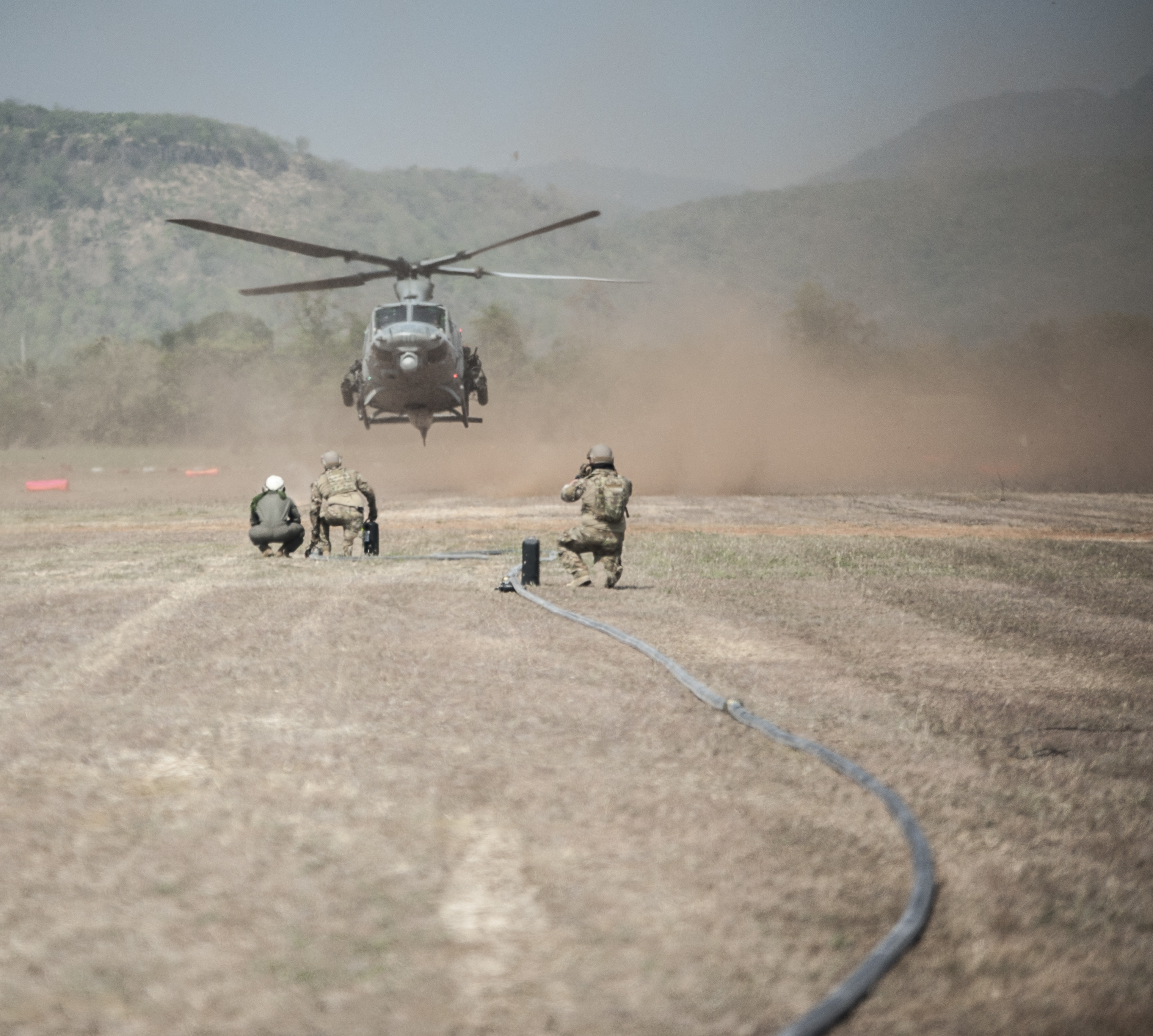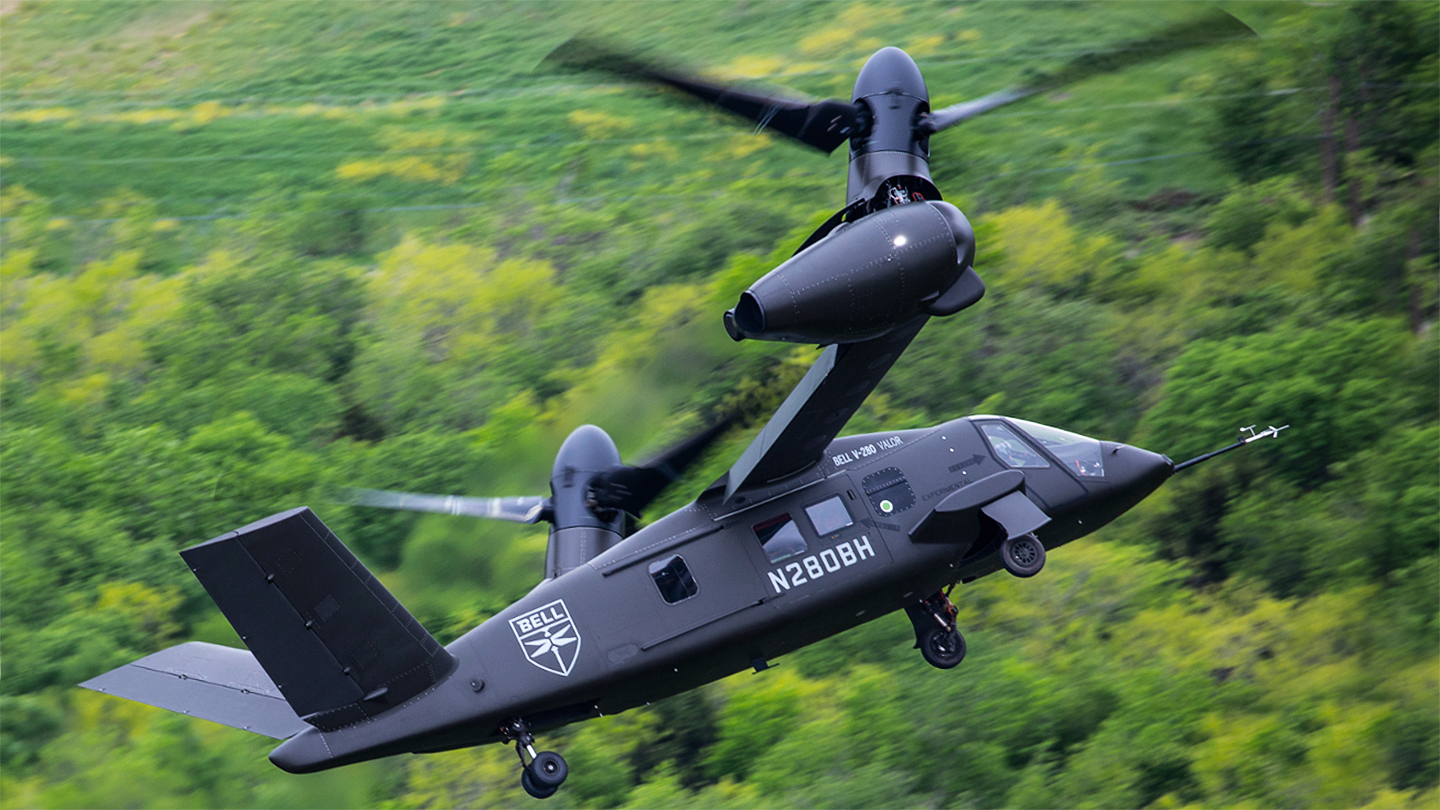The U.S. Army doesn’t expect to get its hands on the new V-280 Valor Future Long-Range Assault Aircraft, or FLRAA, until 2030 at the earliest, but it’s already developing tactics for when the advanced tiltrotor arrives. This fact illustrates just how much of a revolution FLRAA is anticipated to bring, including entirely overhauling the speed, range, and survivability of air assault operations.
Speaking earlier today at the Association of the U.S. Army’s annual symposium, Maj. Gen. Brett Sylvia, commanding general of the 101st Airborne Division, explained the degree to which FLRAA will change the way that historic division, and other Army units, will go to war.

The forthcoming arrival of FLRAA has led to a new concept of operations for the Army, which is now taking shape. This is Large-Scale, Long-Range Air Assault, or L2A2, and, simply put, it relies upon the new tiltrotor to be realized. As TWZ has explored in the past, the specific range and speed advantage of the V-280 Valor was very likely a significant reason why it was chosen for FLRAA ahead of Boeing’s rival SB>1 Defiant.
While the engineering and manufacturing development phase for FLRAA continues, the Army is practicing the L2A2 concept using the aircraft it has on hand.
According to Sylvia, L2A2 is defined by the ability to “deliver one Brigade Combat Team in one period of darkness, over 500 miles, arriving behind enemy lines, and be able to conduct sustained combat operations.”
“We can’t do that right now is because the platforms that we have organic to the 101st are not enough in order for us to be able to do that in one period of darkness,” Sylvia added.

Instead, over the last 12 months, the “The Screaming Eagles” have undertaken four exercises to explore what it takes to move a Brigade Combat Team over that distance, all the while moving exclusively at night.
In the latest of these training events, the division’s 2nd Brigade Combat Team was moved to the Joint Readiness Training Center (JRTC) at Fort Johnson, Louisiana. The 101st is home-based at Fort Campbell, Kentucky, 575 miles distant, from where the simulated air assault was launched.
While moving from one location to the other was achieved, it required the division to set up two mission support sites and six Forward Arming and Refueling Points (FARPs) en route to ensure the movement of the helicopter assault force.
More significantly, it also required three nights in order to be able to move that entire Brigade Combat Team under the cover of darkness. Meanwhile, staffing all of the mission support sites and FARPs, as well as related security and sustainment forces, required almost a thousand soldiers.

The next part of the training was done as a simulation, this time involving the future Air Assault CAB, a formation created to ensure the Army can conduct L2A2.
As Sylvia explained, the Air Assault CAB is going to have four times the number of heavy-lift aircraft than what he has available today, and all of the unit’s UH-60 Black Hawks will be replaced by FLRAA.

“When we ran that in simulation, we were able to execute that one Brigade Combat Team move in one period of darkness, so we made our timeline,” Sylvia said. “But the second thing, and probably more critical than that, was that we cut in half that sustainment and security that we needed. We went down to one mission support site and only three Forward Arming and Refueling Points in order to be able to execute that. I don’t think I need to tell you what that does in terms of our survivability, because of our speed and our lower signature when we can execute that.”
Over the course of the next few years, the Army will continue to build its Air Assault Combat Aviation Brigade, to meet L2A2 aspirations. In the meantime, as Sylvia said, “We are doing the things in order to be able to build the foundation so that all we have to do is just receive the aircraft and we’ll be ready to execute.”
“What we can do, is we can build the tactics, techniques, and procedures, build the doctrine, build the structures, understand the sustainment in order to be able to do that.”

Sylvia also addressed how the Army was working to adapt how its future mission support sites and FARPs would look like so that they can survive and be effective during large-scale conflicts with peer or near-peer adversaries, including over significant distances, as will be found in the Indo-Pacific theater.
Sylvia said the 101st Airborne Division’s current training is exploring changes to support sites and FARPs so they can “operate in a semi-permissive or in a non-permissive environment.”
In the future, the Army’s FARPs will have to be “dispersed, distributed, and much smaller,” Sylvia noted.
Sylvia recalled one of the exercises that explored new ways of distributing FARPs.
“We didn’t land like we traditionally do, where you go, you take over an airfield, and you park all your aircraft out there in the field. So now we are taking our aircraft, we are parking them in a very distributed manner, not on airfields. We’re camouflaging the aircraft, camouflaging the FARPs out there.”

A resurgence in interest in camouflaging such assets to deceive opponents and otherwise help to conceal the movements and activities of friendly forces is something that we have examined in the past and is especially relevant for any future high-end fight involving the United States, such as one against China in the Pacific.
Initial findings have been highly encouraging, Sylvia noted.
“During one of our exercises, when we got done afterward, and we were talking with the opposing force commander, he said, ‘Hey, I had great success in finding and targeting your FARPs.’ And I said, ‘Yeah, how many did you get?’ And he said, ‘I got two.’ I said, ‘Did you know I had nine out there?’ And he said, ‘Obviously I wasn’t as good as I thought I was.’ And so that’s the point. We do have to think about how we do these things differently. New capabilities certainly are great, but I think our tactics and techniques are the things that are going to be most effective in the near term.”
A first FLRAA for the Army is expected to take to the air in 2026, with low-rate initial production slated to begin in 2028, leading to initial fielding in 2030.
While the Army may be pinning its hopes of achieving Large-Scale, Long-Range Air Assault firmly on FLRAA, that doesn’t mean the UH-60 will be disappearing any time soon.

Also speaking at AUSA today, Maj. Gen. Clair Gill, Commanding General at the U.S. Army Aviation Center of Excellence and Fort Novosel, said that the future force mix will come down to the specific situation and operational demands at the time — as well as budgetary constraints.
“Would I love to put a FLRAA everywhere that there’s a Black Hawk? Sure. Do I think it’s affordable? Probably not,” Gill told reporters.
“The Black Hawk is coming up on 40 years old, I believe, and my sense is the Black Hawk is going to compete with the B-52 and C-130 for going the distance. We’re going to have Black Hawks in our formation as long as any of us are reading the news.”
“I think FLRAA is going to come on.” Gill continued. “We’re going to learn a lot about it. We’re going to scale it. We’re going to see where we are in the 2030s, once we go to full-rate production and we get that first limited test unit out, learn a lot about it, we got to figure out how we train it. We start proliferating it. And if it, if it is that game-changing technology and everybody says that we’ve got to double down, then maybe we buy more. But I think initially it’s going to be some sort of a mix, and I don’t see the Black Hawk going away.”
Contact the author: thomas@thewarzone.com
